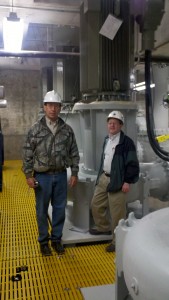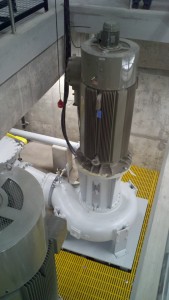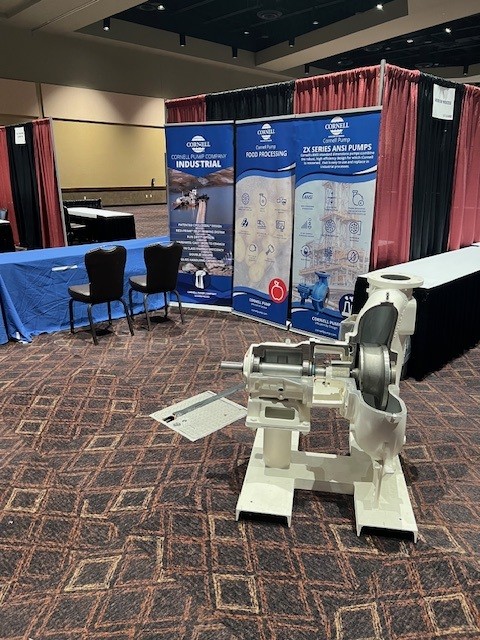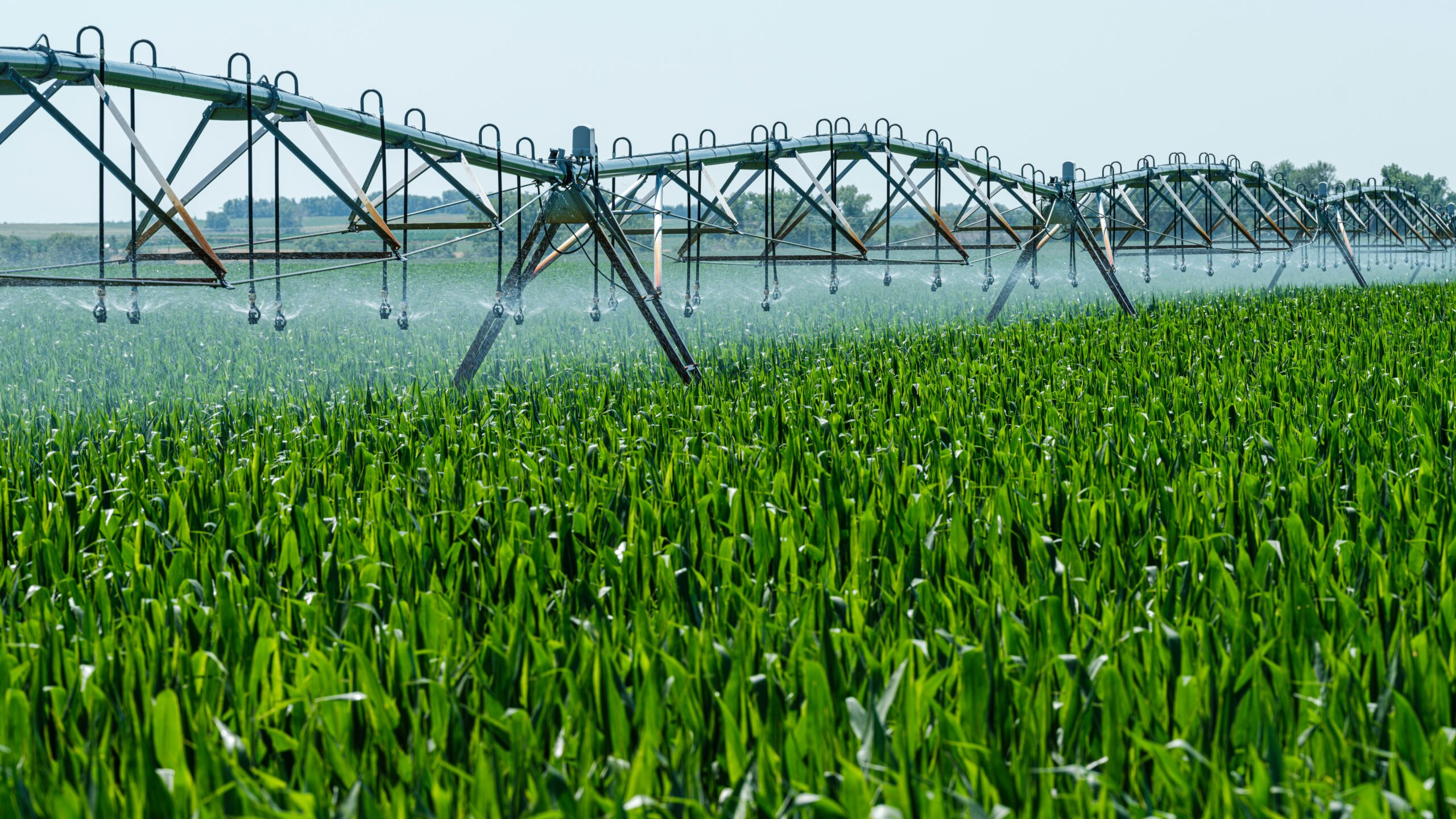
![]() The Problem: Previous installation of vertical line shaft and dry pit pump design. The station was becoming increasingly expensive to maintain and operate. Adding to maintenance issues were the pump station’s age and location—it had been operating for more than 30 years within a floodplain. The station was flooding several times a year, requiring costly repairs and loss of use of the station
The Problem: Previous installation of vertical line shaft and dry pit pump design. The station was becoming increasingly expensive to maintain and operate. Adding to maintenance issues were the pump station’s age and location—it had been operating for more than 30 years within a floodplain. The station was flooding several times a year, requiring costly repairs and loss of use of the station
The Solution: In 2010 the county commissioner approved a replacement project of the old station. Design specifications called for the new pump station to handle a peak flow capacity of 60 MGD; in order to reduce or eliminate station flooding, improve efficiency, and assure reliable operation.
 To meet those objectives, design architects determined the need for minimum of 30” suction and 24” discharge, that motor horsepower could not exceed 350HP, that the station be equipped with a variable frequency drive system, and that the system have the ability to function should the new station flood. The pump selected needed to have a capacity of 20 MGD at approximately 75 feet Total Dynamic Head (TDH).
To meet those objectives, design architects determined the need for minimum of 30” suction and 24” discharge, that motor horsepower could not exceed 350HP, that the station be equipped with a variable frequency drive system, and that the system have the ability to function should the new station flood. The pump selected needed to have a capacity of 20 MGD at approximately 75 feet Total Dynamic Head (TDH).
Submersible type, non-clog sewage pumps were evaluated versus vertical non-clog sewage pumps with immersible motors. The Cornell immersible design of four (4) Cornell Immersible Pumps, model 20NHF-VC20, operating at 720 RPM, 350 Hp, with Continental Immersible Motors offered premium efficiency when compared with pump systems from other manufacturers.
End Results: The four (4) Cornell 20NHF-VC20 pumps with Continental Immersible Motors have been operating since late 2010. The station was put to the test in the first couple months of operation—heavy spring rains forced the station to maximum capacity. It performed above design standards, reaching and maintaining 76 MGD—26 percent above design requirements.



